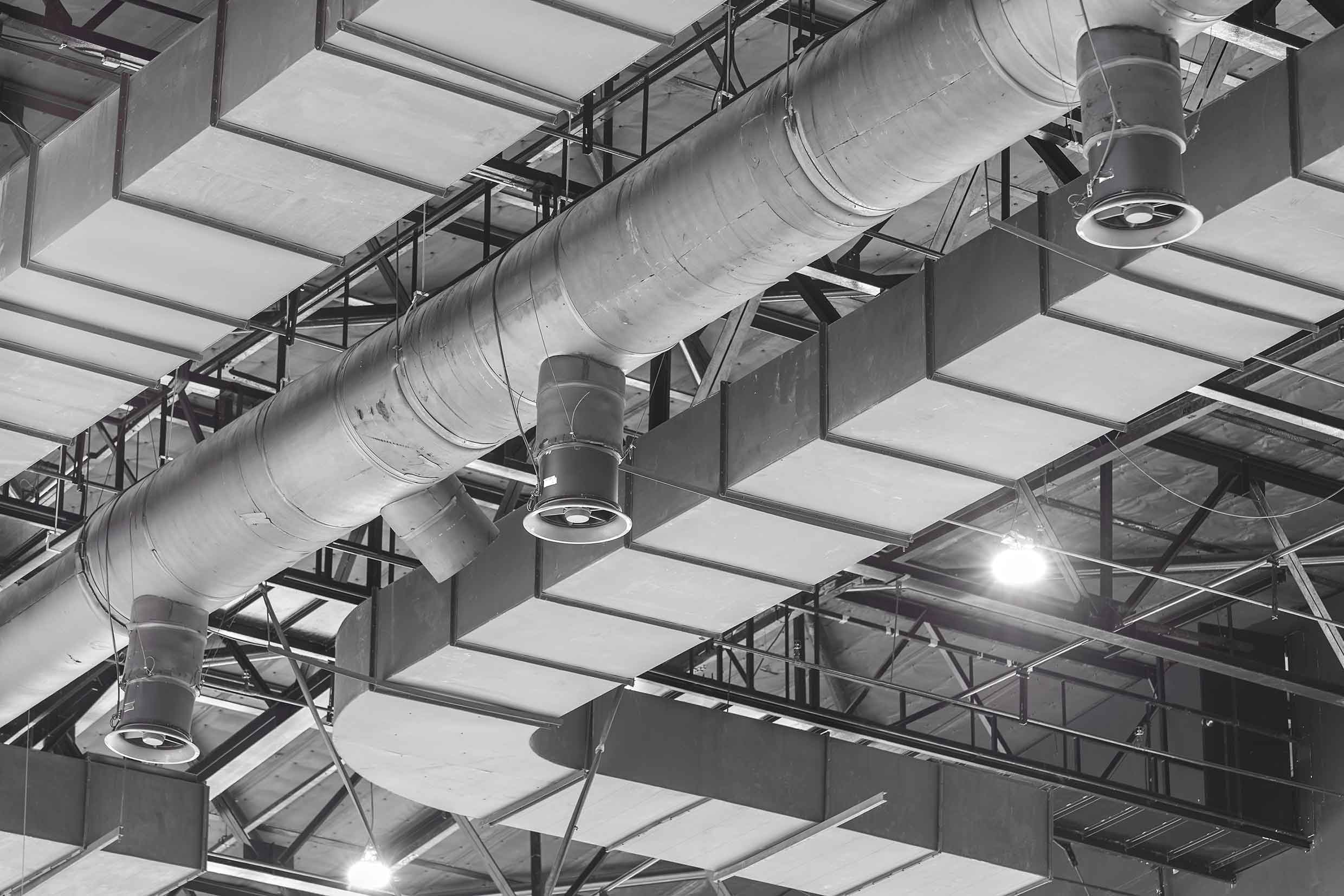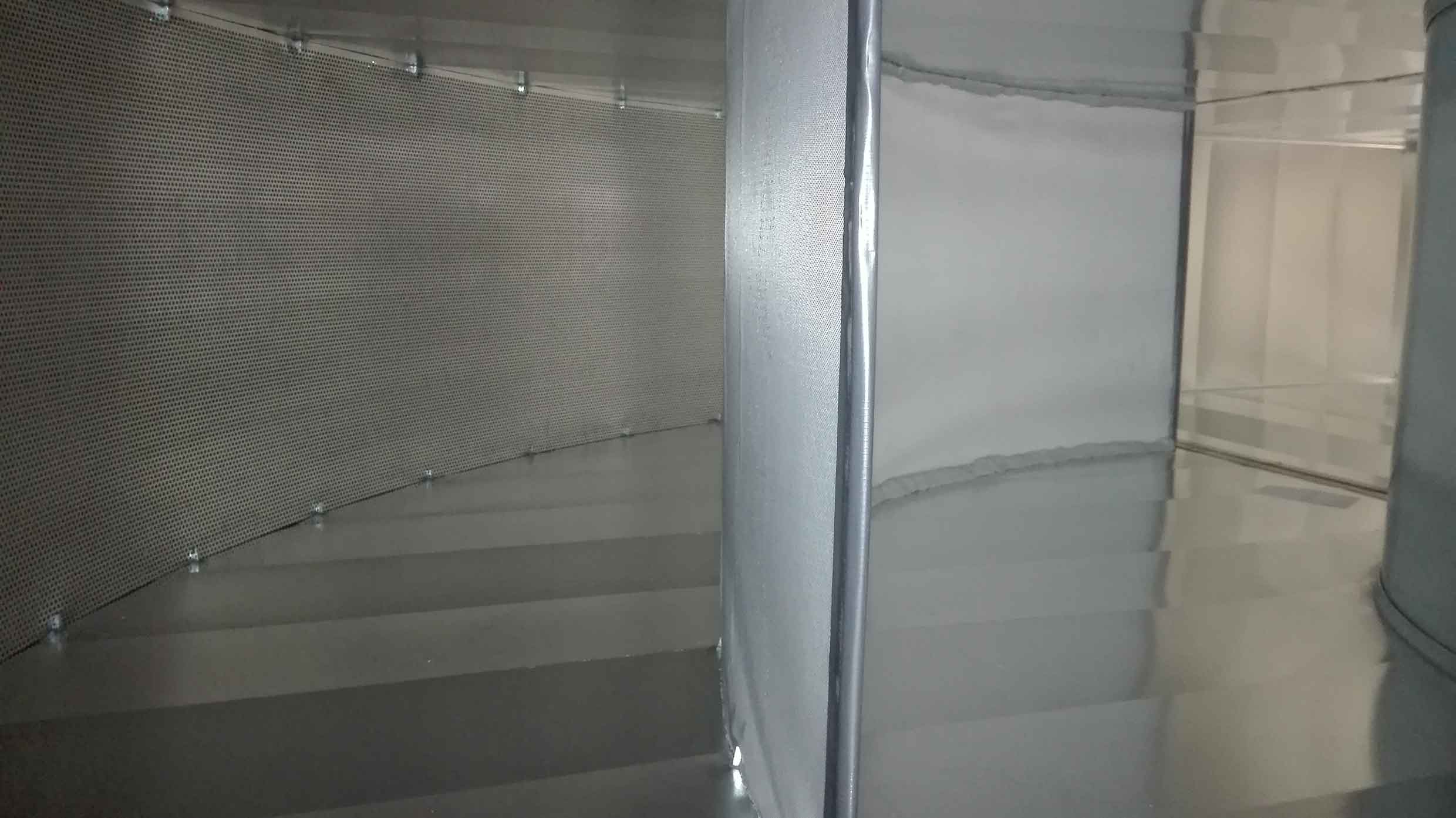Energy-efficient sound insulation
Whether it is for extracting air from rooms or controlled air exchange in the workshop: air processing systems are very loud and requirements concerning noise emissions and sound insulation are therefore becoming increasingly stringent. Although the sound insulation systems used reduce noise levels, they also cause pressure losses. Consequently: the consumption of energy by the systems rises, operating costs go up, and the ecological balance is impaired. A team of researchers from Fraunhofer IBP now wants to turn the tables by using sound insulation systems to save energy.


Energy consumption and operating costs
A silencer in the duct hinders the airflow and thus generates higher pressure losses. To counteract this, fans have to be more powerful, meaning that they consume more energy. Not only do the manufacturing and purchasing costs of the installed sound-absorbing systems have to be paid for, but also the running costs, which, depending on the system, can be very high. There are therefore correlations between acoustic efficiency, energy efficiency and cost efficiency.
Distributed noise control concept
Long sound-absorbing edge linings cause significantly lower pressure losses in straight duct sections than splitter silencers - this was demonstrated by researchers at Fraunhofer IBP in the EnEAS project funded by the German Federal Ministry of Economic Affairs and Energy (BMWi). However, edge linings do not dampen higher frequency noise as effectively. As a rule, splitter silencers with a small gap width are used. But the narrower the duct cross-section, the greater the pressure loss.
How can duct bends be designed with optimized acoustics - including high-frequency sound absorption - but with a low pressure loss? This issue was methodically studied by the team of scientists during the project. Two approaches were combined: straight ducts were fitted with sound-absorbing edge linings, whereas duct bends were optimized acoustically (see Figures 1 and 2). In this way, the researchers were able to develop an overall acoustic concept effective across the entire frequency range but with significantly lower pressure losses. The concept therefore optimized not only the acoustics but also energy and cost efficiency.
Results
For the optimization process, the Fraunhofer IBP research team mathematically described the correlations between acoustic efficiency and energy efficiency. This made it possible to assess the acoustic effects and generated pressure loss of the installed systems and to optimize both according to requirements.
The points in the graph (right) show the pre-calculated solution space. Each point represents a sound-absorbing configuration that meets the acoustic requirements. In doing so, the following applies: the closer the solution to the origin, the lower the pressure loss and the better the sound absorption. Compared with conventional sound insulation solutions, on average energy savings between 10 and 15 percent can be made. Conclusion: well-designed acoustic components can lower energy costs.